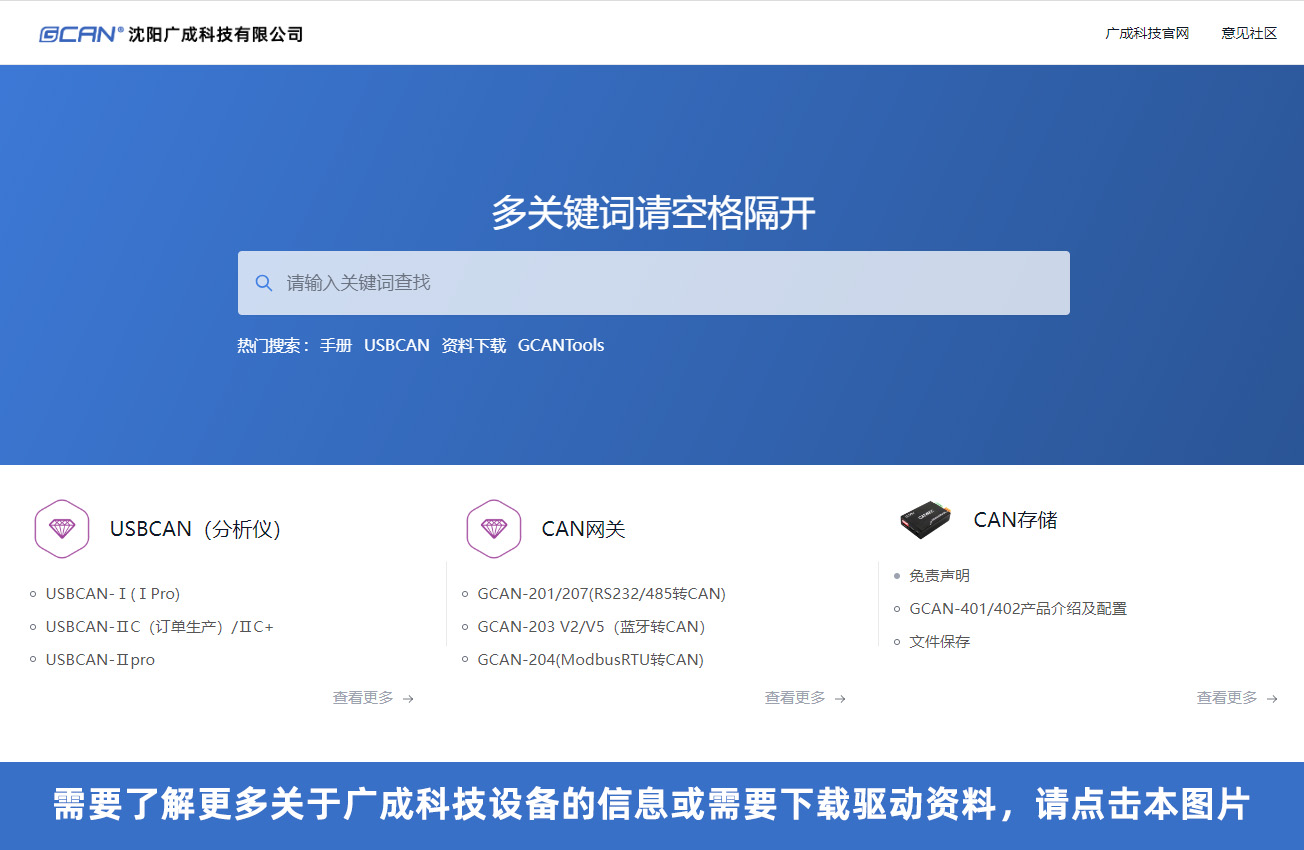GCAN-208-S CAN to fiber optic conversion
- Brand:
- GCAN
- Model:
- GCAN-208-S
- Application:
- ● Fire alarm system networking; ● CAN bus communication modification; ● Anti-interference modification of CAN bus in areas with strong interference from fans, etc;
-
1. Equipment Introduction
The GCAN-208-S series module from Shenyang Guangcheng Technology Co., Ltd. is an industrial-grade CAN bus to fiber optic converter that integrates one standard fiber optic interface (SC, ST, FC, single mode, multimode, single core, dual core optional) and one standard CAN bus interface. The GCAN-208-S series module is specifically designed for fire alarm host networking, capable of converting CAN bus data into optical signals for transmission via fiber optic cables. By using pairs of GCAN-208-SA and GCAN-208-SB modules, users can easily extend the communication distance of the CAN bus, up to a maximum of 12 kilometers (the communication distance can be extended by adding repeaters).
The GCAN-208-S series module supports point-to-point connection, enabling direct communication without any settings. The communication baud rate ranges from 5Kbps to 500Kbps. Upon receiving data packets from the access device, it forwards them directly bit by bit without any caching, only performing physical layer conversion, that is, converting electrical signals to optical signals and vice versa.
2. Equipment Parameters
● Use an external power supply (DC +9~30V±5%);
● Operating temperature range: -40℃~+85℃;
● Operating humidity range: 15% to 95% RH, non-condensing;
● Integrate one CAN bus interface, using terminal wiring method;
● CAN bus signals include: CAN_H, CAN_L, EARTH;
● The CAN bus comes with a built-in 120Ω terminal resistor, which can be selected through a dip switch;
● The CAN bus supports CAN2.0A and CAN2.0B frame formats, complying with the ISO/DIS 11898 specification;
● CAN bus communication can be achieved with a baud rate ranging from 5Kbps to 500Kbps;
● The CAN bus interface adopts electrical isolation, with an isolation module insulation voltage of DC 3000V;
● Fiber optic interfaces SC, ST, and FC are optional;
● Fiber transmission modes include single mode and multimode options;
● The number of optical fibers is available in single-core and dual-core options.
3. Application Fields
● Fire alarm system networking;
● CAN bus communication modification;
● Anti-interference modification of CAN bus in areas with strong interference from fans, etc;
Welcome to inquire and learn more.
- ● Use an external power supply (DC +9~30V±5%);
● Operating temperature range: -40℃~+85℃;
● Operating humidity range: 15% to 95% RH, non-condensing;
● Integrate one CAN bus interface, using terminal wiring method;
● CAN bus signals include: CAN_H, CAN_L, EARTH;
● The CAN bus comes with a built-in 120Ω terminal resistor, which can be selected through a dip switch;
● The CAN bus supports CAN2.0A and CAN2.0B frame formats, complying with the ISO/DIS 11898 specification;
● CAN bus communication can be achieved with a baud rate ranging from 5Kbps to 500Kbps;
● The CAN bus interface adopts electrical isolation, with an isolation module insulation voltage of DC 3000V;
● Fiber optic interfaces SC, ST, and FC are optional;
● Fiber transmission modes include single mode and multimode options;
● The number of optical fibers is available in single-core and dual-core options.
- Packing
Standard package:Carton
Delivery Time
2~5 days after receipt of your payment by air express
After-sale service
GCAN provide one year free after-sales warranty,lifetime free software and technical support. 





